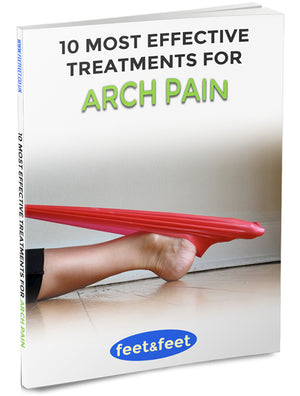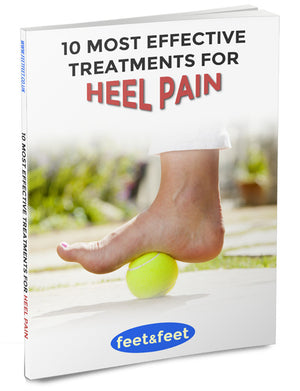What Causes Foot Cramps? 12 Reasons and Treatments

Most people will experience foot cramps at some point in their life. This common condition occurs when the foot goes into a sudden and involuntary spasm, causing pain and an inability to control the affected muscles.
Foot cramps vary in intensity and may last only a couple of seconds or go on for several minutes. Sometimes the affected muscles remain tender and sore for hours after cramping.
It's possible to be affected by painful foot cramps any time of the day, but most people (3 out of 4) who get foot cramps experience them at night. Older people are more at risk; 1 out of 4 people over the age of 60 and 1 out of 3 people over the age of 80 experience foot cramps.
Although foot cramps are completely harmless most of the time, the pain and discomfort is unpleasant, and constant foot cramps in particular can negatively affect one's quality of life by disrupting sleep and other activities. Let’s take a look at 12 common causes of foot cramps and how to treat them.
12 Reasons For Foot Cramps and How to Stop Them
What causes foot cramps? It's often difficult to pinpoint the exact reason why someone is experiencing painful foot cramps since multiple factors may be at play. Some causes may require medical attention, though most are easy to remedy at home.
Infrequent foot cramps can be relieved by massaging and stretching the muscles or applying warmth to the affected area, while over-the-counter pain medication can alleviate any lingering tenderness after an episode of cramping. However, when we experience constant foot cramps and very severe foot cramps, it's good to look into what causes them in order to address the issue and prevent further episodes.
Possible causes of foot cramps include:
1. Dehydration
Dehydration is one of the most common causes of foot cramps. Not drinking enough fluids, sweating and excessive intake of caffeine or salt may cause dehydration.

Treatment
Increasing your water intake is especially important when exercising and in hot weather. Carrying a water bottle when on the go or keeping a glass of water on the desk where you can see it can help you remember to drink enough. Try to limit your intake of salt, alcohol and caffeinated drinks as well.
2. Nutrient Imbalance
Vitamins and minerals work synergistically to maintain the proper functioning of the muscles, and an excessive intake of one nutrient or a deficiency in another can affect this balance and make you prone to foot cramps.
Magnesium, calcium and potassium are especially important for normal muscle function but vitamins E, D and B6 also play a significant role.
Treatment
Focus on eating a healthy and balanced diet as the first step if you suspect that a dietary imbalance is causing foot cramps. Make sure you're eating a good variety of foods including plenty of fruit and vegetables that are rich in the aforementioned nutrients.
Taking the appropriate supplements can also be helpful. Ask your GP to do a blood test if you suspect you may have a deficiency in a particular nutrient.
3. Intense Exercise
Muscle cramping is common after vigorous exercising, especially when muscles are over-worked and fatigued. Activities like running and dancing in particular often cause foot cramps because they put a lot of stress on the feet and legs.
Treatment
Take the time to warm up before any vigorous physical activity and cool down afterwards. When beginning a new exercise regime, build up to it slowly to allow your body to adjust. If you’re over the age of 50, avoid overworking the muscles when training and working out. Exercise for shorter periods of time and go for less intense workouts.
4. Lack of Exercise
A sedentary lifestyle can be as bad as overtraining when it comes foot cramps. Lack of physical activity can lead to sluggish circulation and may decrease the flow of oxygen into the muscles. Over time, physical inactivity can also lead to weakening of the muscles, making them more prone to cramping.
Treatment
Make exercise a regular part of your life and focus on lower body strengthening exercises if you suffer from muscle weakness. When you're required to sit down for long periods of time – at work or on a long-haul flight – set reminders for yourself to stretch and move frequently. Even going for a short walk everyday will improve your health.
5. Pregnancy
Many women experience foot cramps when they're expecting a baby, especially during the last few weeks of pregnancy. Carrying the extra weight of the baby can add extra strain on the legs and the increased pressure on the veins in the lower body can impair circulation in the legs and feet.
Treatment
Boost circulation in the legs during the third trimester by regular, gentle exercise such as prenatal yoga, walking or swimming.
In addition to physical activity, it's also good to stretch your leg muscles daily, especially at bedtime to prevent foot cramps at night. Compression socks for pregnancy can also be effective at increasing blood circulation and preventing blood clots.
6. Medication
Foot cramps may occur as a side effect of taking certain medicines, such as statins and diuretics. There are usually alternatives to most medications, whether prescribed or natural.
Treatment
Check the package insert or search online to determine if foot cramps are a known side effect of the medication you're taking, and talk to your GP about possible alternatives.
7. Anxiety
Feeling anxious and stressed out can lead to shallow breathing, and the resulting reduction in oxygen flow to the muscles can cause foot cramps. Anxiety and stress can also lead to a other medical problems too.

Treatment
A regular meditation practice or simply taking the time to practice deep breathing on a regular basis can soothe nerves as well as help prevent foot cramps by improving the flow of oxygen. You could also try drinking herbal tea like chamomile for its soothing effects.
8. Injuries
Sometimes cramping occurs as a protective mechanism to prevent further injury to overstretched or torn muscles, and may persist even after the injury has healed.
Treatment
If a muscle injury is involved, it's best to be cautious and discuss treatment options with a podiatrist as things like stretching could cause further damage to the muscles. Make sure you rest and relax until the injury is fully healed.
9. Sleeping Position
Some sleeping positions may make us more prone to foot cramps, such as sleeping with the knees bent and the feet pointing downwards.
Treatment
If you suffer from foot cramps at night, try stretching every night before bedtime. If you tend to sleep on your back, try elevating your legs with a cushion, or if you usually sleep on your front, try letting your feet dangle over the edge of the bed.
10. Ill-Fitting Shoes
Certain types of footwear such as high heels and tight shoes can make you more prone to foot cramps by putting strain and pressure on the foot and reducing blood flow.
The forcing of the feet into an unnatural shape may also lead to other painful foot conditions including bunions and plantar fasciitis.
Treatment
Limit the time you wear high heels to special occasions or stop wearing them altogether. Choose footwear (or use arch and heel supportive insoles) that is comfortable and fits well for everyday use.
11. Cold Temperatures
We are more likely to experience foot cramps when we're cold because of the reduced blood flow to the muscles.
Treatment
Apply heat to the affected area by using a heat pad or take a foot bath to warm up. Keep warm during the day by wearing enough layers and staying active. It’s also a good idea to use a hot water bottle near your feet at night.
12. Underlying Medical Conditions
Though even severe foot cramps are usually harmless, they may sometimes be caused by underlying medical conditions such as liver disease, thyroid problems or diabetes.
Treatment
When foot cramps are particularly intense, frequent or accompanied by other symptoms such as swelling and numbness, seek out medical attention to rule out any underlying health conditions.






Comments
Leave a comment